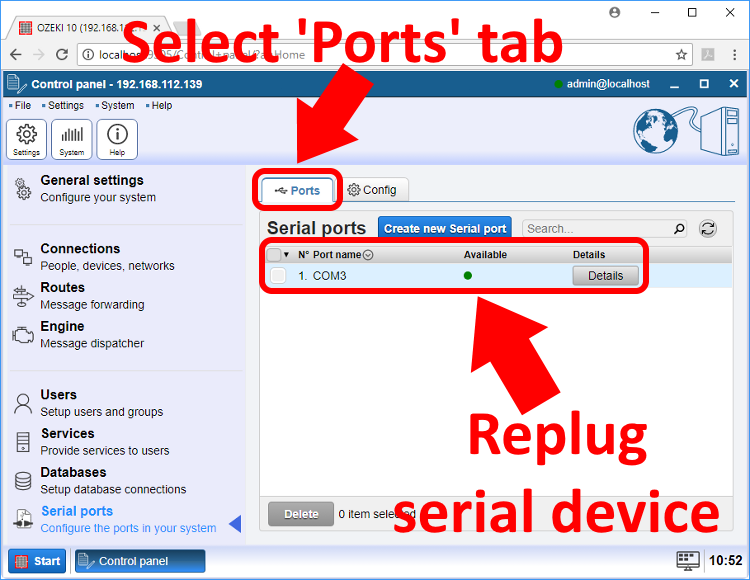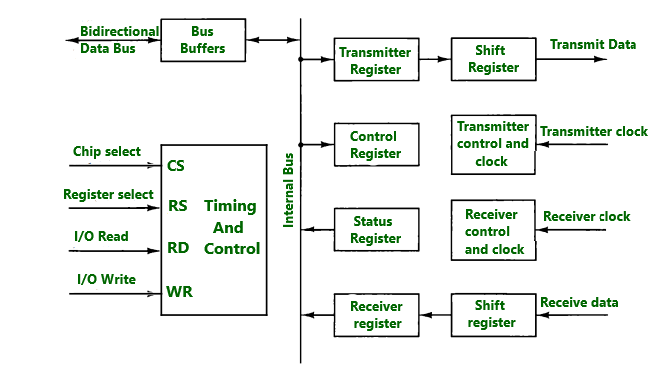



These rules are referred to as the communications protocol, whether the data being exchanged is 8 bits at a time as with the LCD or a single bit at a time as with the serial protocols that will be discussed throughout Unit 4. These include the Universal Asynchronous Receiver Transmitter (UART or USART), the Inter-Integrated Circuit (I2C), and the Serial Peripheral Interface (SPI) protocol.Īs we saw in Unit 3, the communications between the PIC32 processor and the character LCD device required an application of a set of rules that resulted in handshaking. In the four labs associated with Unit 4, we will look at the most common serial protocols used in the world of computer communications. In contrast, point-to-point communications is limited to be exclusively between two endpoints, or nodes, and is not an example of a network. Other protocols are for multi drop applications where many senders can be connected to many receivers – a network is an example. Some protocols are strictly for point to point communications such as the asynchronous serial communications. You may ask, “why so many serial protocols?” The simple answer is that the protocols are optimized for data rates, physical media, physical distance, and connectivity. In some protocols, the transmitter and receiver are synchronized by a completely separate signal while other synchronous protocols (such as CAN) embed the clock signal in the data stream.Ī partial list of existing serial protocols is shown in Appendix B. Asynchronous protocols do not transmit a synchronizing signal with the data, whereas a synchronous protocol transmits a signal that indicates to the receiver when the data signal should be sampled. Serial protocols fall into one of two categories: either asynchronous or synchronous. Lab 4c targets the Serial Peripheral Interface (SPI) protocol while Lab 4d focuses on the Inter-Integrated Circuit (I2C) protocol. Lab 4c and Lab 4d look at two commonly used synchronous data communications protocols. Lab 4a focuses on full-duplex text communications and Lab 4b uses the communications for control of a real-time operating system. Unit 4 Part 2 addresses asynchronous communications protocols, specifically the Universal Asynchronous Receiver Transmitter (UART) protocol, and applies specifically to Lab 4a and Lab 4b. Unit 4 Part 1 contains the following overview that addresses different high level views of digital communications.

The longer the physical distance between these two points (the endpoints), the more expensive the communications media becomes, whether that is wireless or wired based. One of the biggest motivations for implementing serial communications is to minimize the number of processor pins and wires needed to pass data between two points. This is opposed to parallel communications where multiple bits of data are sent simultaneously, such as the interface with the character LCD that was the focus of Unit 3. Serial communications involves sending data one bit at a time. The digital signals can represent computer generated values or be the result of digitization of analog signals. The focus of this unit is digital communication where the information is communicated as encoded discrete level signals. Common residential telephone systems as well as AM and FM radio are forms of analog communications. Telecommunications can be divided into two basic types: digital communications and analog communications. The term is often used in its plural form, telecommunications, because it involves many different technologies.” 1) Such transmission paths are often divided into communication channels which afford the advantages of multiplexing. It is transmitted either electrically over physical media, such as cables, or via electromagnetic radiation. Telecommunication occurs when the exchange of information between communication participants includes the use of technology. “Telecommunication is the transmission of signs, signals, writings, images and sounds or intelligence of any nature by wire, radio, optical, or other electromagnetic systems, as defined by the International Telecommunication Union (ITU). USB Scopes, Analyzers and Signal Generators.


 0 kommentar(er)
0 kommentar(er)
